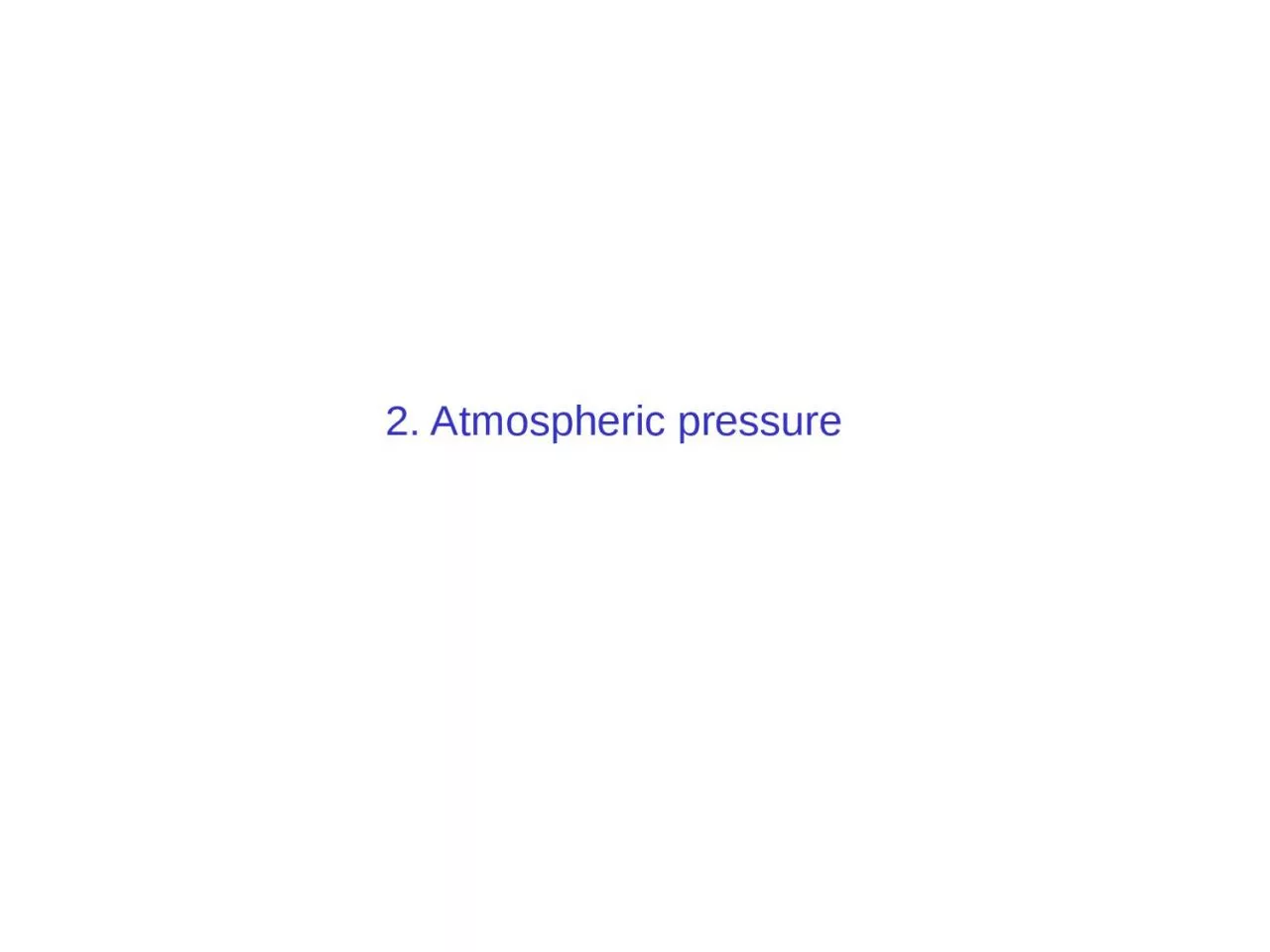

EARTH SURFACE gravity random motion Weight of all air molecules is propagated to surface by random motion of molecules Random motion of molecules causes pressure to be applied in all directions ID: 1003120
Download Presentation The PPT/PDF document "2. Atmospheric pressure Molecular view o..." is the property of its rightful owner. Permission is granted to download and print the materials on this web site for personal, non-commercial use only, and to display it on your personal computer provided you do not modify the materials and that you retain all copyright notices contained in the materials. By downloading content from our website, you accept the terms of this agreement.
1. 2. Atmospheric pressure
2. Molecular view of atmospheric pressureEARTH SURFACEgravityrandommotionWeight of all air molecules is propagated to surface by random motion of moleculesRandom motion of molecules causes pressure to be applied in all directions
3. Measurement of atmospheric pressure with the mercury barometervacuumAhAtmospheric pressure p = pA = rHg gh Mean sea-level pressure: p = 1.013x105 Pa = 1013 hPa = 1013 mb = 1 atm = 760 mm Hg (torr)atmospheric pressure(weight of atmosphere per unit area of surface)SI unit for pressure is the Pascal (Pa): 1 Pa = 1 kg m-1 s-2
4. Today’s sea-level pressure maphttps://www.wpc.ncep.noaa.gov/basicwx/day0-7loop.htmlPressures are in a narrow range 1005-1047 hPa
5. Why are sea-level pressure gradients so weak?Consider a pressure gradient at sea level operating on an elementary air parcel dxdydz with mass dm = ρadxdydz where ρa is the air density: p(x)p(x+dx)Vertical area dydzPressure-gradient force Acceleration For Dp = 10 hPa over Dx = 100 km, a 10-2 m s-2 a 100 km/h wind in 3 h! Wind transports air to from high to low pressure, decreasing DpOn mountains, the surface pressure is lower, and the pressure-gradient force along the Earth surface is balanced by gravity:p(z)p(z+Dz)p-gradientgravityExerted forcep(x)dydz
6. Total mass ma of the atmosphereRadius of Earth:6380 kmMean pressure at Earth's surface: 984 hPa(less than 1013 hPa because of elevated land)Total number of moles of air in atmosphere:Mol. wt. of air: 29 g mole-1 = 0.029 kg mole-1Molecular weight of air:9.81 m s-2 (atmosphere is thin enough that this can be considered constant)
7. Mean vertical profiles of pressure and temperatureTropopauseStratopauseTroposphere has 85% of atmospheric mass, stratosphere has 15%, little above
8. Decrease of pressure with altitude: barometric lawConsider elementary slab of atmosphere at equilibrium between gravity and p-gradient forces:p(z)p(z+dz)hydrostaticequation for fluidsIdeal gas law:Assume uniform T and integrate: barometric lawunit areag
9. Application of barometric law: the sea-breeze effect